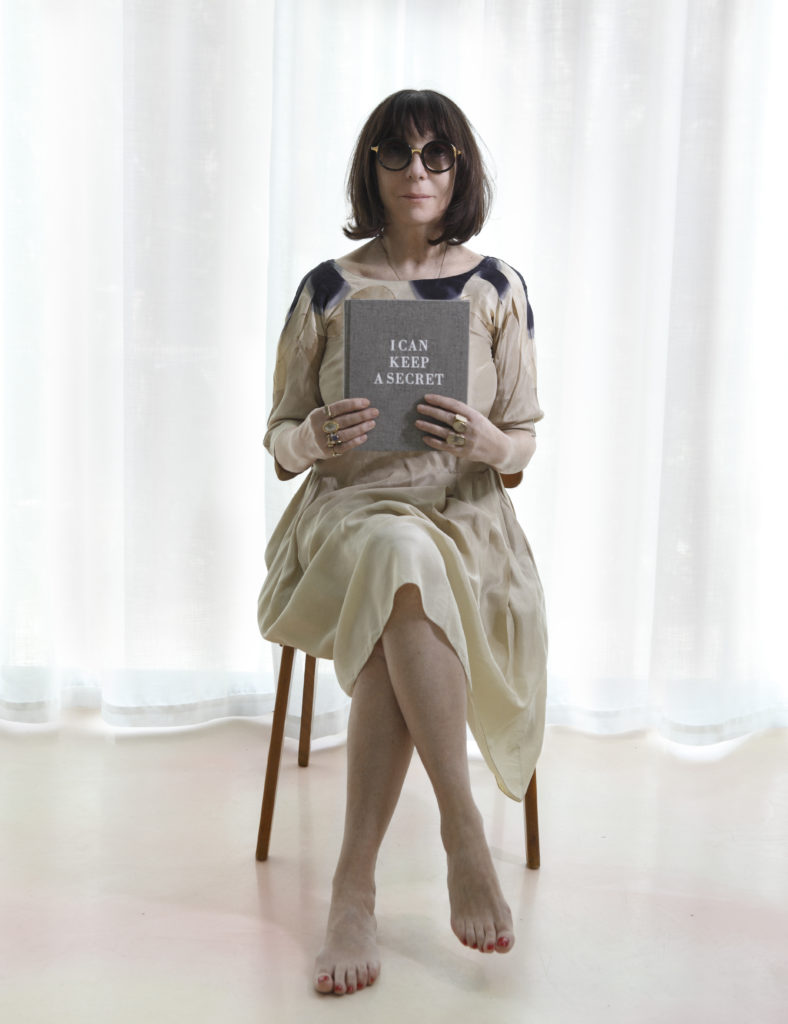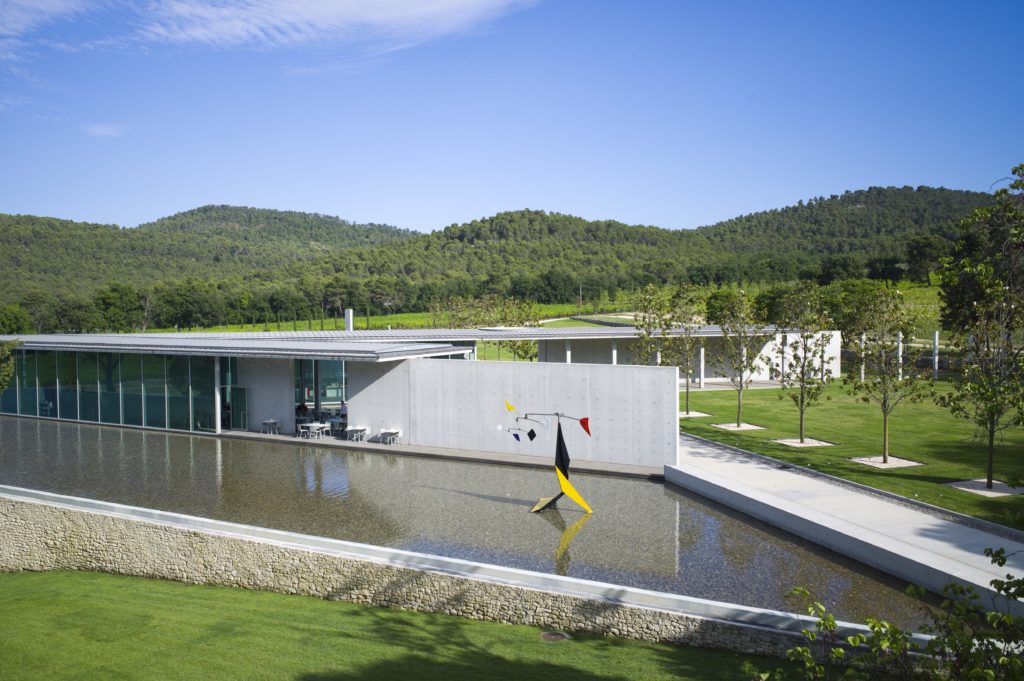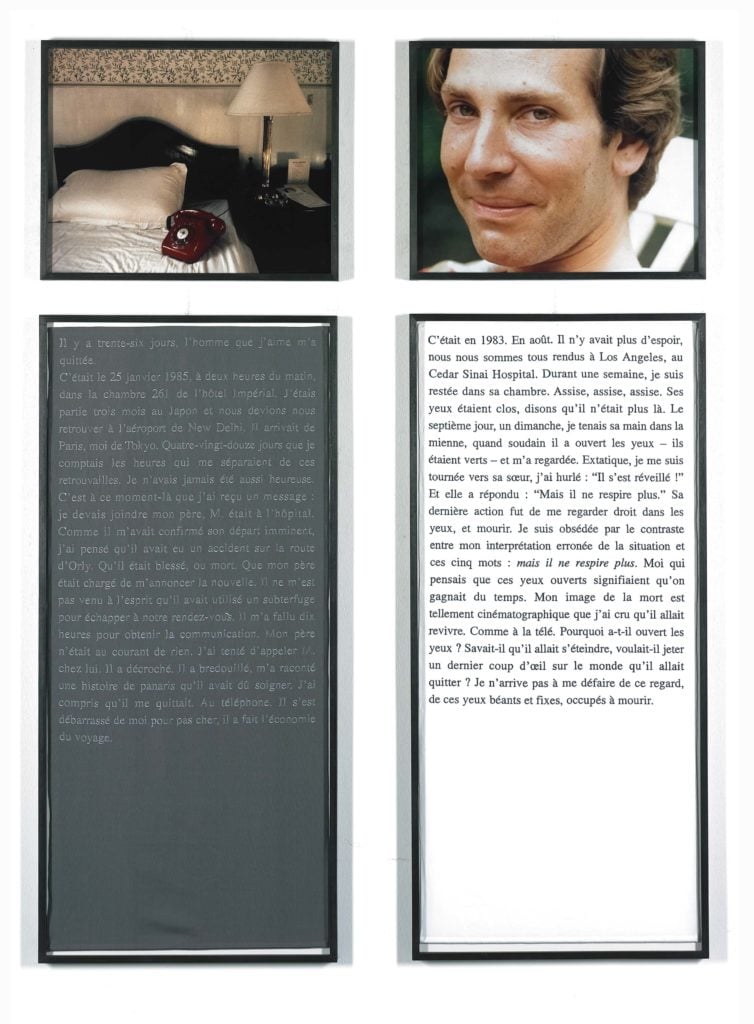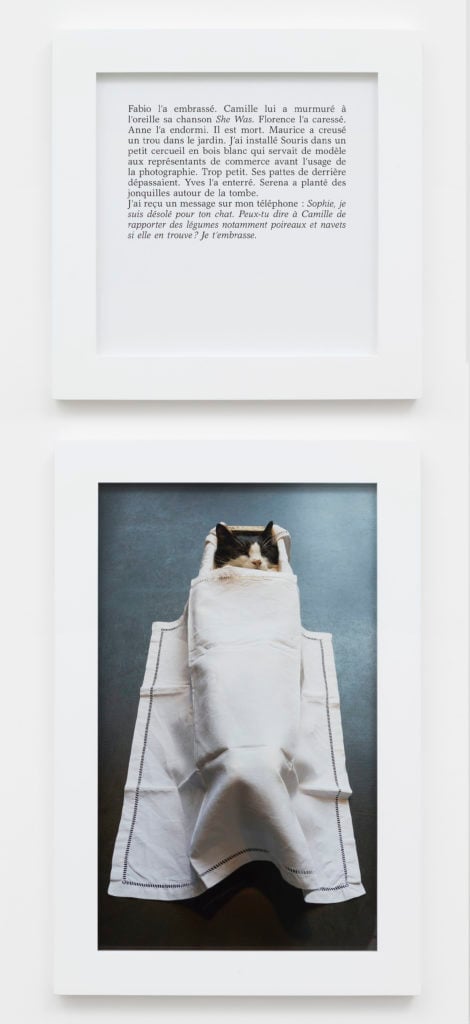Art World
Artist Sophie Calle Wants You to Take Your Secrets to the Grave. Here, She Tells Us Why
We spoke to the French artist ahead of her show at Château La Coste this summer in France.

We spoke to the French artist ahead of her show at Château La Coste this summer in France.

Naomi Rea

Inside the Provençal woods surrounding the Château La Coste vineyard in southeastern France, you might stumble upon an ancient Roman path that comes to an abrupt dead end. Here, the French conceptual artist, writer, and photographer Sophie Calle has built a grave, and she wants people to fill it with secrets.
Calle’s grave is the newest permanent installation on the grounds of the vineyard and contemporary art and architecture destination, and it’s in good company, with work by Alexander Calder and Louise Bourgeois among others installed on the property. The site will be officially inaugurated as part of Calle’s latest exhibition, fittingly titled “Dead End,” which runs July 2 through August 15.

Installation image of Sophie Calle, Dead End at Château La Coste, France. © Stephane Abourdam, Wearecontent(s).
Calle has built graves before, one at the Cimetière des Rois in Geneva in 2016, and last year she was invited by the public art organization Creative Time to make another in Brooklyn’s Green-Wood Cemetery in New York. It seems macabre, but then again, this is the same artist who showed a video of her mother’s dying breaths when she represented France in the 2007 Venice Biennale. Members of the public in each city can now make the pilgrimage to her work to unburden themselves of their deepest, darkest, secrets via a letterbox-like slot in the gravestones.
At the vernissage of “Dead End” on July 1, the grave will be officially christened with a single secret, known only to its keeper, Paddy McKillen, who owns the Château (although Calle tells us people have been surreptitiously slipping secrets into the tomb since it was installed). A few weeks later, on July 21, she will station herself at the graveside to once again listen to the strangers who want to voice their secrets before interring them in writing. “It’s a way for me to make a connection with this grave, to know some of the secrets that are buried there,” Calle tells artnet News.

Chateau La Coste in 2016. ©Tadao Ando, 2011. Photo by Andrew Pattman.
For someone whose work often deals with the voyeuristic—she once stalked a stranger all the way to Venice for her Suite Vénitienne—Calle says that listening to stranger’s relieve themselves of their secrets turned out to be heavier than she initially expected. “It’s a rather uncomfortable position to be in,” she explains. “I realized that I didn’t know what my role was exactly because I’m not a psychological counselor, or a priest, or a therapist.” Unsure of what to do when people burst into tears in front of her, Calle says she wondered, “Do I take them into my arms? Do I remain impassive? Do I advise them?” In the end, she decided to be spontaneous and to react as she would in everyday life, in a human way, rather than as a ritual.
She hopes the site will function on its own for years and, like the others, if the grave fills up, it will be opened and the secrets contained in it burned.
Elsewhere on the 500 acres of the Château’s land, at an exhibition pavilion designed by Renzo Piano, Calle will show work from her expansive project Douleur Exquise (Exquisite Pain) for the first time in France since its debut at a Centre Pompidou retrospective in 2003.
The work came about from a painful breakup Calle experienced after studying abroad in Japan in the 1980s; a boyfriend was meant to meet her in New Delhi at the tail end of her three-month trip but he never showed, instead delivering the news that he was ending their relationship. At the time, Calle says, it was the most painful thing she had ever experienced. When she returned home, Calle found that she didn’t want to talk about the trip and told people about her pain instead, hoping to exhaust it through repetition. Along the way, she collected each of her confidantes’ greatest moments of suffering.

Sophie Calle, Exquisite pain, 38 days ago (1984–2003). ©Sophie Calle / ADAGP Paris, 2018, Courtesy Perrotin.
The narrative- and photograph-based project is centered around texts written by Calle both “Before Pain” and “After Pain,” accompanied with a photograph of the red hotel telephone through which she received the news of her abandonment. In each work, these are juxtaposed with stories and photos of other people’s most painful memories.
Calle explains that she decided to show Douleur Exquise alongside the inauguration of her grave of secrets because, whether or not she could help the people spilling their secrets to her, the act of speaking your pain is in and of itself a cathartic experience, much like the initial motivation behind telling her own painful story.
In the Château’s Old Wine Storehouse, Calle has organized an exhibition titled “How do you deal with your dead?” In it, Calle will show new work from a series she has called “Série Noire” (Black Series), derived from a guestbook she had at a recent exhibition in Paris’s Musée de La Chasse et de La Nature in which people responded to her prompt: “How do you deal with your dead? In an electronic address book, do you delete an acquaintance’s name but do you keep your mother’s? What do you feel when you hit the button: Delete contact?” Calle has made 46 framed books featuring this question, titled after some of the various poetic responses she received, such as We Delete Everything and The Dead Don’t Care.
When asked whether the question about an electronic diary meant she was engaging more with the digital presence in our everyday lives, Calle says it’s just one element. Although you could read Calle’s intimate revelations as a precursor to the oversharing that happens on social media these days, and the digital incursion into our lives leaves a whole minefield after we are dead (you can now appoint someone to be the executor of your Facebook profile after you die). But the 64-year-old isn’t interested in this. “I don’t have Facebook, I’m not on Twitter, I don’t have Instagram,” she says. “So I don’t have that problem in relation to death. I couldn’t say.”

Sophie Calle, Bob (2017). ©Sophie Calle / ADAGP Paris, 2018. Photo by Diane Arques/ ADAGP Paris, 2018. Courtesy of Perrotin.
These new works will be grounded by black-and-white photographs of tombstones that Calle took in a graveyard in California at the beginning of her career, which will be installed on the floor of the pavilion. Also in this section will be work from Calle’s series Ma mère, mon chat, mon père, dans cet ordre (My mother, my cat, my father, in that order), which she showed last year for the first time and some of which has been made for this exhibition.
The project involves a series of photographs accompanied by mini autobiographical texts that she wrote about the deaths of her loved ones. We learn briefly about her father, Robert Calle, a doctor and art collector who died three years ago and was, according to Calle, “definitively important” to her artistic career. “With my father, I was expecting his death,” she says. “He was 95 years old, you see.” Nonetheless, she says that making the artwork helped her to close the book on this chapter of her life.
Losing her cat, named Souris (Mouse), was another matter. This was compounded by the fact that people’s reactions when you lose a pet can be quite callous. “When you say you’re sad about the cat, it’s a bit obscene for people,” she says. “You can’t say that. I mean, if I say my mother or my father is dead, everyone tells me ‘Oh, poor thing, she lost her mother, oh, poor thing, she lost her father,’ but if we say that about our cat, we seem ridiculous. It makes me laugh, when for me, in my daily life, it was almost more violent, because I lived with my cat. I didn’t live with my parents.”
Souris Calle will be the subject of a musical project the artist is showing at Perrotin gallery in Paris in October. Calle says she’s not yet ready to replace her beloved pet, but the show might be her way of seeking closure. “Maybe afterwards I will have another cat, but for the moment I haven’t wanted to. He’s still here,” she says.

Sophie Calle, Souris (2017). ©Sophie Calle /ADAGP Paris 2018. Photo by Claire Dorn. Courtesy of Perrotin.
Also at Perrotin, Calle will devote a section to work explaining the “why” behind her photographs, which will also be featured in a book coming out in October entitled Parce Que (Because). Text describing the moments preceding the capturing of an image will be shown alongside some 30 photographs. She says it strikes her how many photos we seem to take these days, and how seldom we use our eyes to truly appreciate a scene in front of us. She says it’s a way of slowing down our consumption of images and that she will present the project with the photos hidden so that people must first read the story before discovering the image.
The project was triggered by a joke she once read: “It was the story of a man admiring a child in a stroller on the street,” Calle says, “and he says ‘what a beautiful child!’ and the woman pushing it responds, ‘And you haven’t seen his photo!’”